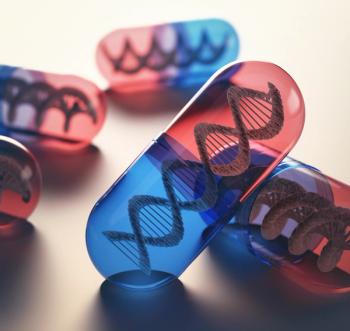
- Pharmaceutical Executive-06-27-2007
- Volume 0
- Issue 0
Pharma Seeing Double, Says New Report
Global market will be twice as big by 2020, but industry needs new vision
PricewaterhouseCoopers' recent announcement that the global pharma market will double to $1.3 trillion by 2020 should have been met with corks popping and confetti falling.
But the blue-chip consulting firm squelched the party mood with its sobering conclusion that the industry's current business model will fall to pieces if companies don't start innovating--and fast. The just-released, much-publicized PwC report, "Pharma 2020: The Vision--Which Path Will You Take?" says the industry needs more than a new pair of glasses to see its way to a profitable future.
"We'not suggesting the blockbuster strategy will die," said Tony Farino, PwC's US pharmaceutical and life sciences advisory services leader. "It just will not suffice to address the global healthcare concerns." Instead, companies need to develop outside-the-box strategies involving mass marketing and consumer services as well as turning generics and OTC medications to their advantage--think of the one-two punch of GlaxoSmithKline's Alli (orlistat) and its tip-packed Web site, myalli.com--to pump up sales lost to patent expirations And big pharmas also need to step up their outside-the-house R&D with more innovative license and partenering deals.
Pipeline renovation is key. But with companies already throwing twice the money they spent in 1996 into drug development with fewer than half the results, leaner and smarter is the way to go. "We're going to see a shift from linear phases to in-life testing and early licensing," Farino said. "In-life testing" means smaller, more focused clinical trials that lead to an early license allowing the company to market the drug to a controlled population while further testing is completed.
But, he said, such early market introduction can only work if companies' understanding of a drug -- from its molecular structure to potential side effects--is much more thorough than it is now. And with pressure on the FDA to increase its safety monitoring, PwC recommends that companies step up to the plate with their own proactive best-practices for clinical development.
The PwC report calls out several additional pharma opportunities:
Emerging markets: The E7 countries--China, India, Brazil, Russia, Indonesia, Mexico, and Turkey--will also come off the global pharma market bench, yielding one-fifth of the sales pie by 2020. Right now, these countries account for only 8 percent of the market. But as they transition from "developing" to "developed" and their populations grow and age, they'll put more money into combating chronic conditions like diabetes and heart disease. "Focusing on drugs that deal with chronic diseases is the best way to deal with an aging global population," said Farino.
Patient compliance: One out of every five Americans either don't fill their prescriptions or use someone else's medication. Besides being unsafe, high noncompliance also cuts into profits and hurts companies' reputations. So PwC advocates personalized compliance monitoring. Companies need to take a more active role in supporting consumers--and finding technological solutions. "We're not quite there yet, but with things like implantable chips and wireless, we can already remotely check blood glucose levels," he said. Compliance monitoring will go a long way toward repairing Big Pharma'sbusted image, Farino said, since it demonstrates dedication to patient safety.
Prevention: Eighty percent of heart-related conditions, strokes, and cases of diabetes can be prevented, along with 40 percent of cancer cases. A significant percentage of these preventive measures involve vaccines, which might explain the 245 pure vaccines and 11 combos in the global pipeline. The total prevention market--including vaccines, compliance monitoring, and the like--will be worth $42 billion by 2015.
Farino added, "There's never been a greater opportunity for the pharma industry to grab hold of these changes to decrease healthcare costs and increase quality."
Articles in this issue
over 18 years ago
Glaxo Gives High-Five to Cancer MarketNewsletter
Lead with insight with the Pharmaceutical Executive newsletter, featuring strategic analysis, leadership trends, and market intelligence for biopharma decision-makers.





